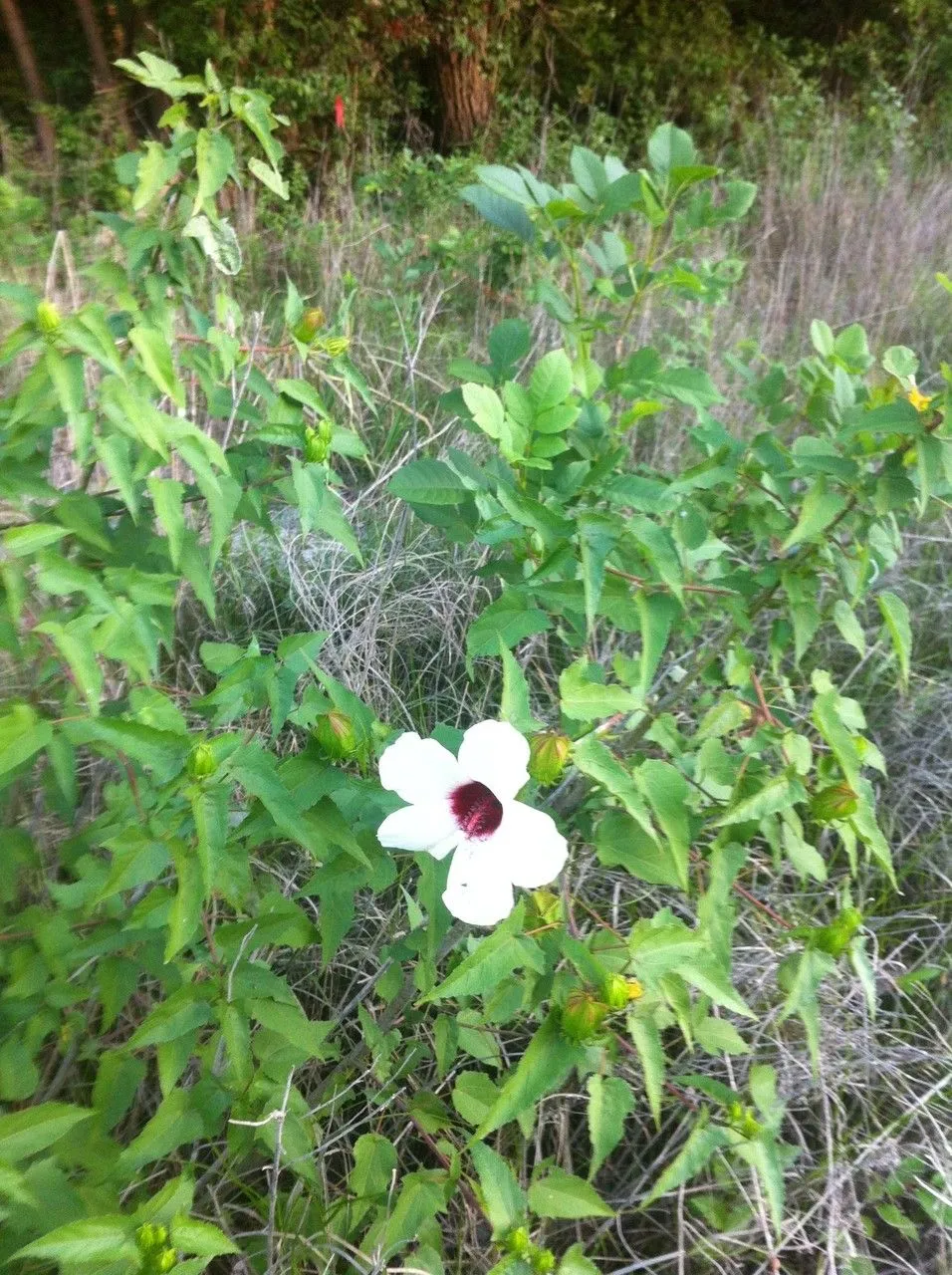
Author: All.
Bibliography: Auct. Syn. Meth. Stirp. Hort. Regii Taur.: 31 (1773)
Year: 1773
Status: accepted
Rank: species
Genus: Hibiscus
Vegetable: False
Observations: SE. Canada to C. & E. U.S.A.
The Scarlet rose-mallow, scientifically known as Hibiscus laevis, is an exquisite flowering plant belonging to the Malvaceae family. This vibrant species captivates botanists and horticulturists alike with its striking beauty and widespread presence across Southeastern Canada and Central to Eastern United States.
Originally documented by the esteemed botanist Carlo Allioni in 1773, Hibiscus laevis features prominently in his work “Auct. Syn. Meth. Stirp. Hort. Regii Taur.: 31.” The Scarlet rose-mallow holds an important place in the botanical history and cultivation records of North America.
This plant is renowned for its large, eye-catching flowers that can range in hues from soft pinks to deep scarlets, adding a splash of color to natural landscapes and gardens. The blooms, typically found during the late summer months, are characterized by their delicate, yet vivid petals, and a conspicuous central stamen that creates a star-like appearance. The vibrant flowers attract various pollinators, including bees and butterflies, playing a crucial role in maintaining ecological balance.
The foliage of the Scarlet rose-mallow is equally remarkable, with heart-shaped leaves that display a lush green color throughout the growing season. These broad leaves provide a striking contrast to the bold floral displays, making Hibiscus laevis a favored choice for ornamental gardening.
Apart from its ornamental appeal, the Scarlet rose-mallow is also valued for its hardiness and adaptability. It thrives in a range of soil types, though it favors moist, well-drained environments typically found along streams, ponds, and wetlands. This adaptability ensures its widespread distribution across its native range, from the southern parts of Canada through to the central and eastern regions of the United States.
In addition to its visual and ecological contributions, the Scarlet rose-mallow has found its place in various cultural and traditional practices. Its stunning blooms have often been used in floral arrangements and decorative arts, highlighting its significance beyond the botanical realm.
In summary, Hibiscus laevis, or the Scarlet rose-mallow, is an emblematic species of the Malvaceae family with a rich historical background and an important ecological role. Whether appreciated for its aesthetic charm in gardens or its ecological contributions in natural settings, this plant continues to be a cherished and significant part of the flora in its native regions.
Eng: sweatingweed, halberd-leaf rose-mallow, halberd-leaved rose-mallow, halberdleaf rosemallow, military hibiscus, scarlet rose-mallow, scarlet rosemallow, smooth rose-mallow, sweating-weed
Fra: ketmie lisse
En: Scarlet rose-mallow, Smooth rose-mallow, Halberd-leaf rose-mallow, Halberdleaf rosemallow, Scarlet rosemallow, Sweatingweed, Halberd-leaved rose-mallow, Military hibiscus, Sweating-weed
Fr: Ketmie lisse
Taken Sep 10, 2021 by Anthony Godoy (cc-by-sa)
Taken Nov 6, 2022 by Rahul Wakare (cc-by-sa)
Taken Aug 13, 2020 by pietr lan (cc-by-sa)
Taken Aug 12, 2021 by Gerard Gerard Buelterman (cc-by-sa)
Taken Sep 9, 2019 by Aryabrat Aryabrat Kasyap (cc-by-sa)
Taken Jan 1, 1900 by EOL − John Hilty (cc-by-nc)
Taken Aug 29, 2021 by Steph M (cc-by-sa)
Taken Aug 27, 2015 by EOL − randomrover88 (cc-by)
Taken Jan 1, 1900 by EOL − John Hilty (cc-by-nc)
Taken Jul 24, 2020 by Smith Sharon (cc-by-sa)
Taken Aug 16, 2015 by EOL − Richard Grayson (cc-by-nc)
Taken Aug 4, 2015 by EOL − Corey Lange (cc-by-nc)
Taken Jul 6, 2015 by EOL − Laura Clark (cc-by-nc)
Taken Jun 25, 2015 by EOL − Sam Kieschnick (cc-by-nc)
Taken Sep 9, 2015 by EOL − Erin Faulkner (cc-by-nc)
Growth form>: Multiple Stem
Growth habit>: Forb/herb
Growth rate>: Moderate
Ph maximum: 7.2
Ph minimum: 5.5
Family: Myrtaceae Author: (F.Muell.) K.D.Hill & L.A.S.Johnson Bibliography: Telopea 6: 402 (1995) Year: 1995 Status:…
Family: Rubiaceae Author: Pierre ex A.Froehner Bibliography: Notizbl. Bot. Gart. Berlin-Dahlem 1: 237 (1897) Year:…
Family: Sapindaceae Author: Koidz. Bibliography: J. Coll. Sci. Imp. Univ. Tokyo 32(1): 38 (1911) Year:…
Family: Asteraceae Author: A.Gray Bibliography: Pacif. Railr. Rep.: 107 (1857) Year: 1857 Status: accepted Rank:…
Family: Fabaceae Author: Medik. Bibliography: Vorles. Churpfälz. Phys.-Ökon. Ges. 2: 398 (1787) Year: 1787 Status:…
Family: Aspleniaceae Author: (Cav.) Alston Bibliography: Bull. Misc. Inform. Kew 1932: 309 (1932) Year: 1932…